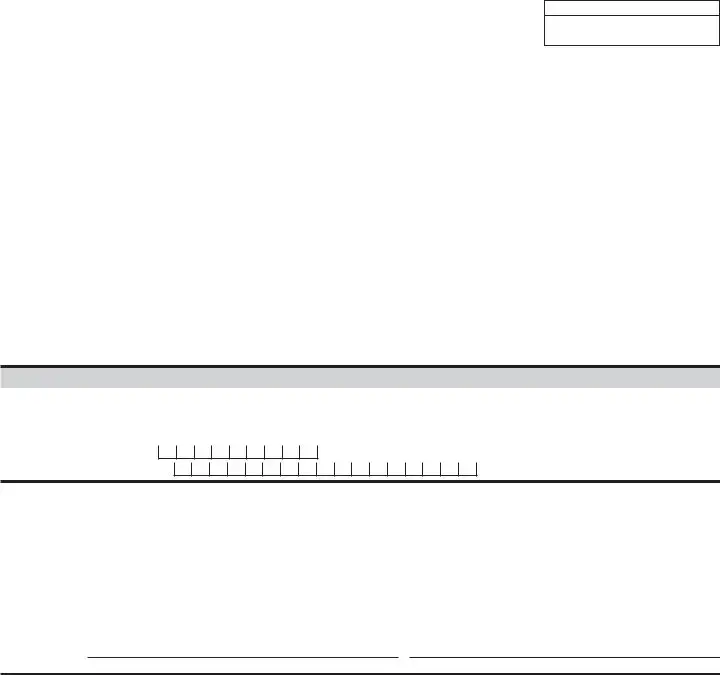The IRS Form 1040, U.S. Individual Income Tax Return, shares similarities with the Form 8879-VT in that both are crucial for tax filing purposes. The Form 1040 serves as the standard federal form that individuals use to file their annual income tax returns, requiring details about their income, tax deductions, and credits to calculate the amount of federal tax owed or refunded. Like the 8879-VT, it gathers personal and financial information to ensure accurate taxation and compliance with tax laws.
IRS Form 4868, Application for Automatic Extension of Time To File U.S. Individual Income Tax Return, is another document resembling the 8879-VT in its function of modifying tax filing obligations. While Form 4868 provides taxpayers with additional time to submit their Form 1040, thereby extending the filing deadline, the 8879-VT facilitates the electronic submission of state income tax returns, showcasing how both forms adjust the tax filing process to accommodate individual needs.
Form W-2, Wage and Tax Statement, also parallels the 8879-VT in its role in the tax filing process. Employers issue Form W-2 to report an employee’s annual wages and the amount of taxes withheld from their paycheck to the IRS. This form is essential for accurately completing income tax returns as it provides information that directly affects the calculation of taxable income – a critical component of both the 1040 and 8879-VT forms.
The IRS Form 8857, Request for Innocent Spouse Relief, and the 8879-VT share the concept of addressing specific taxpayer circumstances under the tax code. Form 8857 is used by individuals seeking relief from joint tax liabilities under certain conditions, highlighting how tax forms can cater to particular situations – similar to how the 8879-VT addresses electronic filing nuances for Vermont state residents.
Form 8822, Change of Address, though primarily administrative, has its core purpose aligned with the 8879-VT in updating taxpayer information to ensure proper tax administration and communication. This form notifies the IRS of a change in address, ensuring that taxpayers receive timely and accurate correspondence about their tax filings, much like how the 8879-VT collects current contact information for state tax purposes.
IRS Form 1099-MISC, Miscellaneous Income, is another document related to the 8879-VT due to its function of reporting various types of income outside of wages, salaries, and tips. This information is essential for completing accurate tax returns because it includes income that may not be subject to withholding but must be reported, underlining the comprehensive nature of income reporting, as seen in both federal and state tax forms like the 8878-VT.
Finally, IRS Form 9465, Installment Agreement Request, is connected to the 8879-VT through its facilitation of compliance with tax obligations. While Form 9465 allows taxpayers to request a payment plan for their federal taxes, demonstrating an adaptive tax collection mechanism, the 8879-VT encompasses the facilitation for filing Vermont state taxes electronically, thereby illustrating adaptive measures within the tax system to accommodate taxpayer situations.
